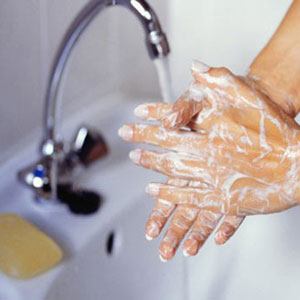
People spend approximately 90% of their time indoors. So how do you know where the germs are and what changes can you make to ensure you breathe easy.
Doormats
Sixty percent of dust comes from shoes. Use an abrasive mat like ones made of nylon yard or polypropylene to grab the particles from your shoes. Keeping your shoes in one location and not wearing them through the home could also help avoid tracking these germs throughout your home. Additionally, vacuum or shake out these mats approximately once per week. Adding this to your general cleaning tasks weekly and scrubbing or washing these mats once a month will also help to remove the potential for germs.
Water Filters
Leveraging water filters in your kitchen and showers have the ability reduce certain chemicals and minerals found in water that can cause disease. More than 2/3 of the United States drinking water has chromium in the water. Chromium is good for the body however in large dosages can cause problems. Recommended levels of chromium in your water are found here by the EPA. Secure water filters certified by the National Science Foundation to make sure you are safe from these metals.
Dish Towels
According to a survey by Hygiene Council, dish towels carry some of the most bacteria in our homes. Damp dishtowels are breeding grounds for bacteria. Change out dish towels frequently to avoid bacteria in a highly productive area in your home. Using disposable wipes could also cut down on bacteria.
Kitchen Sink
The Hygiene Council also teaches us that the kitchen sink contains more germs than your toilet. So make sure your kitchen sink and faucet are wiped down frequently as with dish towels lots of bacteria buildup can take place due to rinsing and washing dirty dishes.
Floors
Keep your floors swept and vacuumed to pick up any of the debris brought in from outside but also to keep the floors clean from any particles.
Pets
If you have pets, clean their litter boxes and cages regulary as they can track dander and feces through you home and groom your pets to keep bacteria and fungi outside.
Bedding
Make sure you regularly wash your bedding weekly and wipe down your bed frame regulary as dust mites can build up around your frame in the crevices. Use an appropriate cleaning solution and rag rather than a duster as a duster may move the particles around versus wiping down the bed frame will take away the potential bacteria.
Plants
Take care of your plants with regular pruning and making sure they are not damp as this can create mold and lead to allergies in your home. Remove dead leaves and dust your plant leaves as dust can accumulate on the leaves.
For more helpful tips on keeping your home germ free, visit the Hygience Council.

